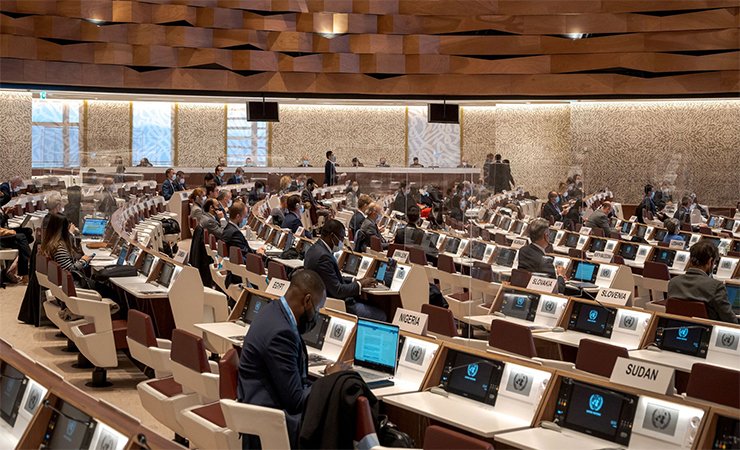The Carnegie India report provides an independent look at how to get the most out of India’s current technology ecosystem, and the measures that may need to be adopted or re-considered to build a lasting and enduring framework for policy changes in the select areas under the current administration.
Konark Bhandari, Fellow, Technology and Society Programme at Carnegie India, in an analysis for the report opines that India’s journey toward becoming a “tech-first” nation is both ambitious and inspiring. The government’s strategic initiatives, such as Digital India and the AI Mission, laid a solid foundation for continued innovation and digital transformation. However, staying ahead in this rapidly evolving landscape requires continuous adaptation, fostering homegrown talent, and strengthening cybersecurity measures for which the government must lead from the front by crafting the appropriate policy framework. By leveraging its vast data resources, enhancing AI capabilities, and encouraging indigenous innovation, India can not only secure its position as a global technology leader but also ensure inclusive growth and digital empowerment for all its citizens – a model for countries across the globe.
Bhandari further opines that the India’s AI Mission, approved in March 2024 with a budget of Rs 10,371 crores (approximately $1.2 billion), marks a significant proactive step in India’s digital journey. It covers extensive ground under its seven pillars: developing a 10,000 graphics processing units (GPU) compute capacity in public-private partnership; development of indigenous domain-specific large multimodal models; the establishment of a unified data platform; funding to industry for the development of AI applications; development of human resource in AI skills; deep tech AI funding to startups; and promoting safe and ethical AI.
Staying ahead in the rapidly evolving technology ecosystem requires continuous adaptation, fostering homegrown talent, and strengthening cybersecurity measures for which the government must lead from the front by crafting the appropriate policy framework
Ajay Kumar, Non-resident Senior Fellow, Technology and Society Programme, Carnegie India commenting on Building a Tech-First India commented that India’s journey toward becoming a “tech-first” nation is both ambitious and inspiring. The government’s strategic initiatives, such as Digital India and the AI Mission, lay a solid foundation for continued innovation and digital transformation. However, staying ahead in this rapidly evolving landscape requires continuous adaptation, fostering homegrown talent, and strengthening cybersecurity measures for which the government must lead from the front by crafting the appropriate policy framework. By leveraging its vast data resources, enhancing AI capabilities, and encouraging indigenous innovation, India can not only secure its position as a global technology leader but also ensure inclusive growth and digital empowerment for all its citizens – a model for countries across the globe.
Focussing on AI in India: Regulate or Wait?, Amlan Mohanty, Non-resident Research Fellow, Technology and Society Programme and Shatakratu Sahu, Research Analyst and Senior Programme Manager, Technology and Society Programme at Carnegie India were of the view that before adopting any new AI regulations, Indian policymakers need to have a thorough understanding of various factors: the unique risks posed by AI, the evolving dynamics of the AI ecosystem, the gaps in the existing legal framework, and the cost of implementing and complying with such regulations, among other considerations.
They further expressed the view that without this foundational knowledge, adopting new AI regulations would be premature and could lead to unintended consequences that far outweigh the benefits.
Staying ahead in this rapidly evolving landscape requires continuous adaptation, fostering homegrown talent, and strengthening cybersecurity measures for which the government must lead from the front by crafting the appropriate policy framework
Commenting on Indo-US partnership in the field, Arun K Singh, Non-resident Senior Fellow, Carnegie India in his article Building on the Progress of the India-U.S. initiative on Critical and Emerging Technology was of the view that it is now time to assess the potential challenges that could arise while taking the initiative forward in the coming years. The new US National Security Council (NSC) leadership will need to continue to see a stake in partnerships such as the iCET that can mobilise different parts of the US bureaucracy to adjust rules and procedures and overcome lingering questions about the long-term benefits of such partnerships with India.
Singh further observed that the two countries must also recognise the advantage of being open to include new areas of collaboration under the iCET framework. The iCET should remain focused on emerging and critical high-level technologies. Cooperation in these areas will no doubt create a willingness and confidence for more collaboration in areas that may have been absent so far. But those opportunities should continue to be pursued elsewhere while using the push generated by the iCET. Otherwise, the iCET process could veer off its original intent into no doubt important areas, but away from issues of critical high-level technology.
Further, the private sector and academia lead many of these technologies, especially in the United States, and must continue to be actively involved. While government clearance is necessary, entities must see academic or business value in pursuing such collaboration. Commercialising and exploiting these technologies will also benefit India but cannot be done by the government alone.
Before adopting any new AI regulations, Indian policymakers need to have a thorough understanding of various factors: the unique risks posed by AI, the evolving dynamics of the AI ecosystem, the gaps in the existing legal framework, and the cost of implementing and complying with such regulations, among other considerations
Konark Bhandari, Fellow, Technology and Society Programme at Carnegie India his article The Next Steps for India’s Semiconductor Strategy pointed out that India’s semiconductor initiatives were meant to attract major industry players to set up operations within the country, a goal that has been partially realised. As India progresses to the next phase of the semiconductor mission, we ought to consider strategies to bring in players beyond anchor companies. The semiconductor market thrives when a full-fledged ecosystem of players works together in clusters. Addressing the challenge of fostering such an ecosystem will be crucial for the ISM as it sets its sights on the next phase of growing India’s semiconductor ecosystem.

Shruti Sharma, Fellow and Chief Coordinator, Global Technology Summit, Technology and Society Programme at Carnegie India commenting on the Biotechnology Innovation Ecosystem in India was of the view that for India to advance in biopharmaceutical innovation, it must enhance academia-industry engagement to effectively translate research into marketable products. Maintaining drug quality is crucial to sustaining its global positioning as the “pharmacy of the world” and regulatory reforms are essential to expedite the approval of biopharma products. To achieve its 2030 goals, India should capitalize on its strengths in the biopharmaceutical sector to pave the way for a resource-efficient and innovative bioeconomy.
Commenting on how India could increase its Space Exports, Tejas Bharadwaj, Research Analyst, Technology and Society Programme opines that firstly, to boost launch exports, India should reduce costs and waiting time. This may be achieved by commercialising SSLV by transferring its technology to the private sector and operationalising the second launchpad in Kulasekarapattinam. This can enable bespoke on-demand launches and increased launch export opportunities. India’s development of heavier and reusable launchers can make it competitive in the launch market and attract international customers.
India and US must also recognise the advantage of being open to include new areas of collaboration under the iCET framework. The iCET should remain focussed on emerging and critical high-level technologies
Secondly, government procurement programmes can create sustained internal demand for various Indian space companies to scale up and build export capabilities. Thirdly, India should continue to expand engagements in the Indo-Pacific, South America, and Africa. While the initiative on Critical and Emerging Technology (iCET) with the United States, and a strategic partnership with France have created opportunities for India’s space private sector, it must look beyond developed space economies. Since 2019, India’s launch services have been limited to Europe, Japan, Singapore, and the United States. Increasing commercial outreach to these regions will enable India to increase its space export market, considering their market potential. Bhardwaj advocated for establishing similar units and appointing business development attachés in Indian missions across Africa and Latin America can help India identify and capitalize on export opportunities.
Raj Shukla, Member, Union Public Service Commission in his article, India’s Cyber Challenge in the Digital Transition suggested a roadmap for the future outlining that the NCSC and the DCA may formulate a conjoint, cyber strategy for India, outlining clear plans for laying a cyber foundation and creating cyber deterrence.
The NCSC should thereafter outline detailed pathways for making India’s digital ecosystem defensible and resilient. Critical infrastructure like power grids, water supply systems, and transportation networks will need to be prioritised. And bringing digital legacy systems up to date with current cyber standards is also imperative.
Private sector entities must see academic or business value in pursuing such collaboration. Commercialising and exploiting these technologies will also benefit India but cannot be done by the government alone
The DCA should formulate plans and develop offensive capacities for cyberspace to include developing cyber exploits and put in place credible structures for cyber deterrence. It needs to be underlined that offensive cyber capacities are a sine qua non for effective cyber deterrence. The details of such a framework, however, will obviously remain non-public and confidential.
The task of building the country’s digital ecosystem defensible and resilient, for reasons of scale and expertise, cannot be on the shoulders of the government alone. A public-private partnership model where cyber startups are integrated into the effort, with necessary incentives and revenue-earning models, will need to be evolved.
Raksha Anirveda's editorial desk team brings in the collective experience of creative professionals - a fine mix of senior copy editors, writers, proofreaders and designers. Working as a team, they continuously create, manage, and curate content to sustain the magazine's profile and reputation in line with market trends and achieve magazine's goal.





